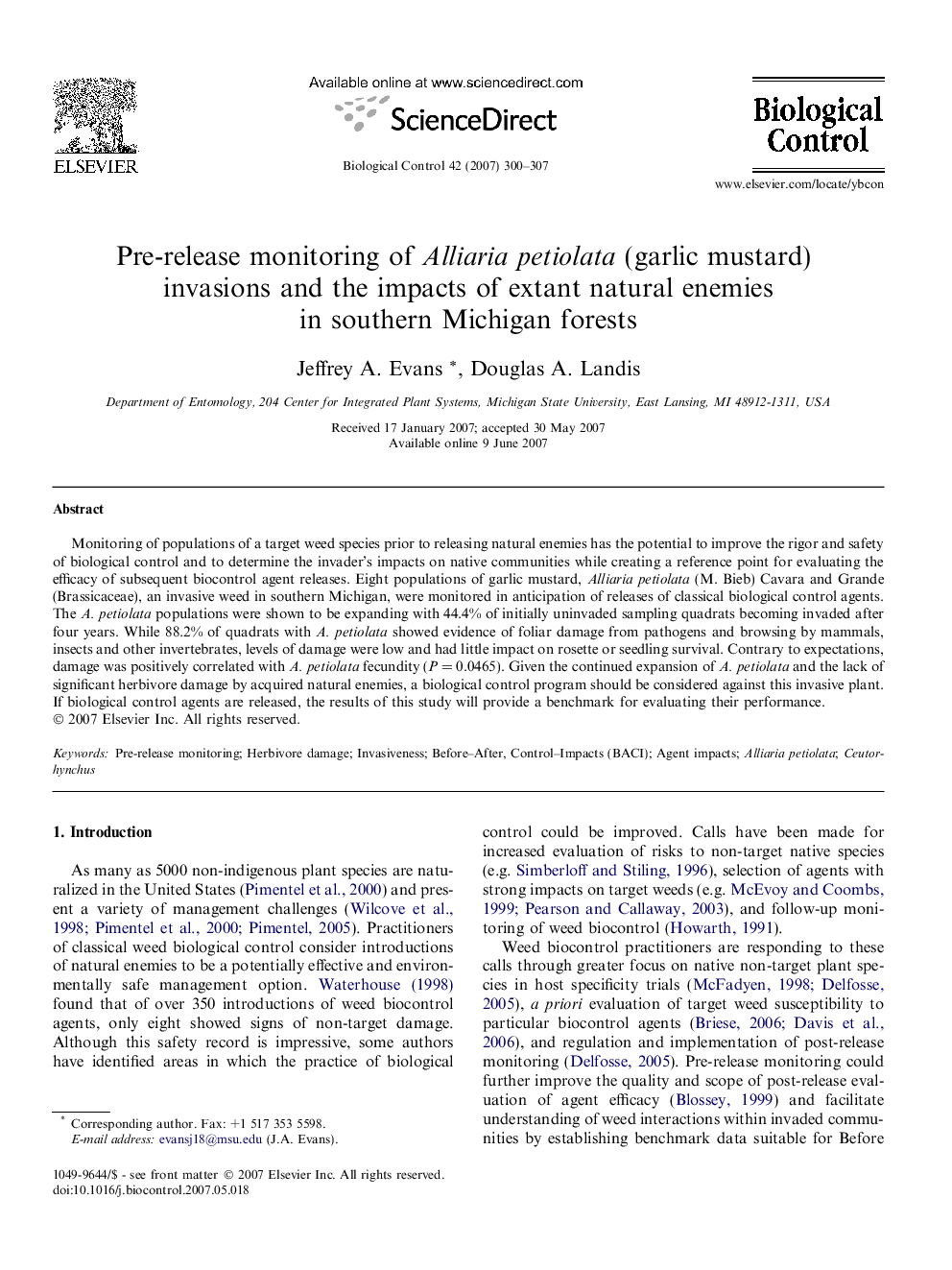| Article ID | Journal | Published Year | Pages | File Type |
|---|---|---|---|---|
| 4505067 | Biological Control | 2007 | 8 Pages |
Monitoring of populations of a target weed species prior to releasing natural enemies has the potential to improve the rigor and safety of biological control and to determine the invader’s impacts on native communities while creating a reference point for evaluating the efficacy of subsequent biocontrol agent releases. Eight populations of garlic mustard, Alliaria petiolata (M. Bieb) Cavara and Grande (Brassicaceae), an invasive weed in southern Michigan, were monitored in anticipation of releases of classical biological control agents. The A. petiolata populations were shown to be expanding with 44.4% of initially uninvaded sampling quadrats becoming invaded after four years. While 88.2% of quadrats with A. petiolata showed evidence of foliar damage from pathogens and browsing by mammals, insects and other invertebrates, levels of damage were low and had little impact on rosette or seedling survival. Contrary to expectations, damage was positively correlated with A. petiolata fecundity (P = 0.0465). Given the continued expansion of A. petiolata and the lack of significant herbivore damage by acquired natural enemies, a biological control program should be considered against this invasive plant. If biological control agents are released, the results of this study will provide a benchmark for evaluating their performance.
